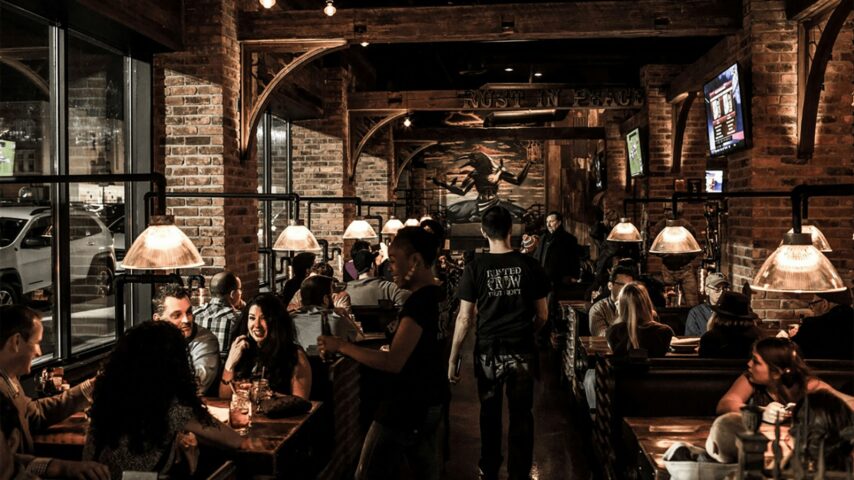A couple of weeks ago, we ran a poll on LinkedIn to see what restaurateurs were focusing on this year. 38% of respondents called out controlling costs as their main priority.
There’s no question as to why restaurateurs may want to focus on controlling costs given the current economic climate. The cost of goods, rent and staff are all increasing at an alarming pace.
So what can restaurateurs do to control their costs without cutting back on quality and what makes them special? We’ll break down 15 ways of doing just that in this blog.
Controlling staff costs in F&B businesses
1. One of the best ways to control staff costs is to schedule your team as efficiently as possible. That means staffing according to demand: scheduling more people when it’s busy and fewer in down times. This will help take advantage of the busiest times with enough staff to serve a higher volume of customers as efficiently as possible and saves costs in the lighter periods.
This requires dynamic scheduling: every day will be different and schedules will need to change based on the time of the year, month, or whatever has an impact on your sales. Using the same schedule week in and week out will not maximise potential here.
2. Maximise the revenue you’re able to generate for each of the labour hours that you spend. Keeping track of labour productivity allows you to optimise the revenue you bring in for each labour hour paid. Decide what your goal number is and then train the team to either upsell more items or reduce the number of people working to match that number.
Tenzo tip: try implementing a staggered handover time. Instead of having two teams hand over to each other by overlapping for a full hour, have one team member manage the handover with the second team taking over after the first one has clocked out.
3. Talking of upselling, keep track of each of your team members’ stats. Who has the best attachment rate for drinks or sides? If one of your team is consistently crushing it, use them as a resource to teach your other team members.
Tenzo tip: Keep track of your team’s average transaction values as compared to other team members who worked the same shifts as them. That way you’re looking at like-for-like activity and not someone who is working the after-work bar rush compared to sleepy Saturday mornings.
4. Finally, this is pretty obvious but treat your team well. It’s far more expensive to have to keep recruiting and training new team members than to treat the talent you have well and keep them motivated.
Showing that you appreciate your team and their efforts goes a long way in fostering loyalty within the team.

How to reduce the costs of food and goods in your restaurants
5. Avoid overordering. Easier said than done, but having a clear idea of what your future demand looks like will make this a much smoother process. The best ordering technique for this is called dynamic par ordering where you order according to future demand rather than static par ordering where you order to make up a certain number of items no matter what the future outlook is.
Tenzo Tip: If you don’t have a reliable forecasting solution (cough – Tenzo – cough), you can still forecast your future sales by looking at your sales mix by day of the week, month of the year, etc. By having an idea of your most popular items by timeframe, you’ll be able to predict what items your needs much more accurately.
Check out how The Vurger Co managed to reduce their waste from 5% to 1% by doing just that.
6. Another way to reduce your food costs is to buy local, in-season ingredients. By buying local your delivery costs will be far lower and in-season products will be far more plentiful and therefore cheaper. It also gives you the opportunity to create seasonal menus that make the most of the freshest ingredients.
7. If you’re not able to change up the menu seasonally, try to stick with as few suppliers as possible. This allows you to have more negotiation room when it comes to finding deals thanks to stronger relationships. Do keep an ear to the ground though, if you know that prices fluctuate regularly, knowing prices from different suppliers can help you negotiate the lowest cost.
Identify what ingredients would make the most impact if their prices were reduced. These are usually your high-cost, high-use items. For example, you might be a pasta restaurant that uses a large amount of parmesan in multiple dishes. Parmesan is usually on the expensive side, so being able to negotiate a lower rate for that might make a tangible difference.
Tenzo tip: keep track of your cost per item to see which items are seeing price increases and get ahead of the curve. Actively negotiate with your suppliers to keep price hikes to a minimum or consider finding alternatives to high-cost ingredients.
8. Use the whole product. Nose to tail has become a bit of a buzzword and for good reason. However, it extends much farther than just using an entire cow or pig across your menu. It also applies to produce. Use carrot tops for pesto, vegetable peels to make stock or demi-glace, orange peels in your desserts, and make soup with dishes that don’t sell.
Food waste is a huge problem in the restaurant industry with tons and tons of perfectly edible food being thrown away. Using the whole product can greatly reduce that and can make for a fun challenge within the restaurant!

Tackling your operational processes to control costs in hospitality
9. Make sure that you’re consistently reviewing your menu items. Work out the profitability of each of your items as well as their attachment rate to see what your plough horses, stars, puzzles and duds are (the are ways of categorising your dishes by profitability and popularity and are a key part of menu engineering).
Once you’ve identified which areas of your menu could be improved, start testing! Puzzles could be put forward in marketing campaigns to increase popularity and consider increasing the price of plough horses to make them more profitable.
Tenzo tip: perhaps a bit advanced, but treat your delivery app menus like Uber! In times of high demand, try ‘surging’ the prices of popular dishes and reducing the prices of specials you want to push. In slower periods, bring your prices back to normal.
10. It’s also worth establishing if you’ve chosen the right portion sizes. Try having a separate bin for any food left on plates that come back to the kitchen to see if you’re regularly having to throw away food. Actually seeing the plate waste can alert you to any over servings and where to make adjustments.
For what it’s worth, it’s also valuable to track reviews to see if customers complain if the portions are too small. If no food is coming back to the kitchen at all it may mean it’s absolutely delicious, but it might also show that customers are not being satiated which could, in turn, cause you to lose repeat business.
11. As hinted at earlier, use AI to forecast your future sales. Using a rolling four-week average (as most businesses do for their sales forecasts) doesn’t take into account any seasonality or big events and can leave you with severely over- or underestimations of your demand.
By using a forecasting engine that uses AI to predict future trends, your forecasts get 30-50% more accurate. That means you can staff efficiently with rotas that can be confirmed far in advance as well as order the right amount of food.
Tenzo tip: Make sure that you develop a regular process of checking and approving your forecasts! AI can get you far but AI with a manager’s input is even better.
12. To save costs on delivery, consider creating a ‘virtual brand’ to use exclusively on each delivery platform. That way you can benefit from their exclusivity clauses which often lower the commission they take. As a bonus, it also allows you to test out new dishes and gauge popularity before you launch them in your main brand.
13. If at all possible, do consider order-at-table apps and/or kiosks. When customers can order through a screen, their transaction values tend to be much higher as they’re not embarrassed by the quantity. However, make sure you have the manpower to service all these orders as long wait times can negate the excitement of in-app ordering.
Also, consider the type of business you are, QSRs do great with kiosks and some casual dining can really take advantage of QR codes, but if customers want to interact with servers, these can be a bit of a letdown. It might be that you create more efficient back-of-house operations that allow your team to give great hospitality without having to worry about in-house processes.
14. Remember to use your floor space efficiently. If you have large spaces that are not being used for anything cost-efficient, then consider switching things up. A large back room can be used as a prepping area for virtual brands, for example.
Why not consider trying some retail techniques? One metric that shops often use is revenue per square metre. It’s not the most helpful for restaurants usually but could be a good experiment to see if you’re really making the most out of your space.
15. Finally, automation is your friend. The more you can automate processes, the more time your team has to do what they do best: provide hospitality.
It can seem a bit daunting to automate processes that you’ve traditionally had to do manually, but in a world with more and more technology choices for restaurateurs automation is now a viable option that allows you to use these technologies to the best of their abilities and frees your team up of admin tasks.
With controlling and reducing costs in restaurants now more important than ever, we hope that these 15 top tips help. If you’re interested in seeing how Tenzo can also help with controlling costs, don’t hesitate to get in touch! We’d be more than happy to help.
Cover photo by Micheile dot com from Unsplash




